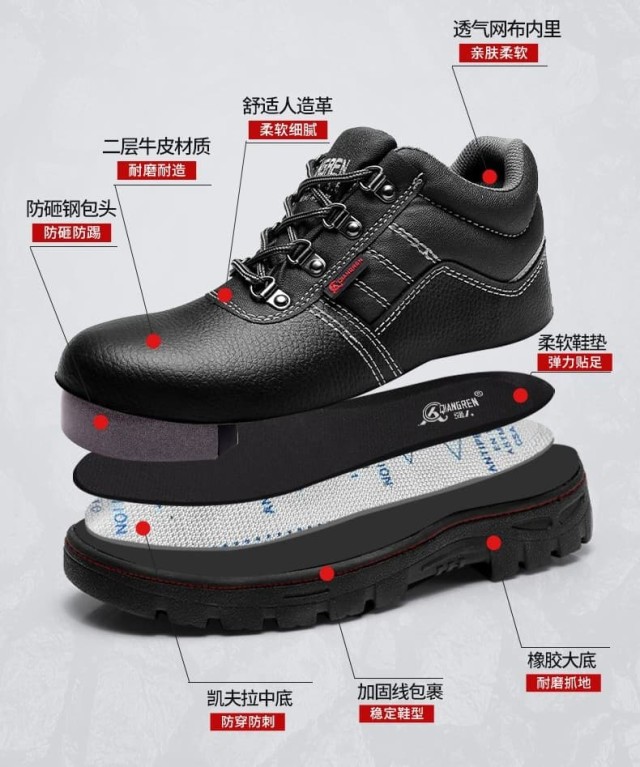Selecting the right work boot materials isn’t just about comfort—it’s about protecting against occupational hazards while balancing durability, weight, and environmental demands. This guide breaks down the best materials for construction, electrical work, oil/gas operations, and more, backed by safety certifications and real-world performance data.
Choosing Work Boot Materials
Rubber: Waterproofing vs. Breathability Trade-offs
Rubber is a go-to for waterproofing, especially in wet environments like agriculture or fisheries. However, its lack of breathability can lead to sweat buildup. For moderate conditions, hybrid designs (e.g., rubber outsoles with breathable uppers) strike a balance.
Key considerations:
- Pros: Resists ammonia, animal waste, and fertilizers; excellent slip resistance.
- Cons: Degrades with prolonged oil exposure; heavier than synthetics.
PVC: Chemical Resistance and Weight Considerations
PVC outperforms rubber in chemical-heavy settings (e.g., labs, oil refineries). It’s lighter and resists oils, fats, and harsh substances, but lacks flexibility.
Did you know?
PVC boots are often 20–30% lighter than rubber equivalents, reducing fatigue during long shifts.
Advanced Composite Materials
Composite toes (carbon fiber, Kevlar®) are ideal for electrical work or extreme temperatures. They’re non-conductive and 30% lighter than steel but may bulk up to meet safety ratings.
Trade-offs:
- Heat/Cold: Unlike metal, composites don’t conduct temperature, preventing frostbite or burns.
- Durability: Less impact-resistant than steel over time.
Work Environment Applications
Construction Site Durability Requirements
Construction boots need:
- Abrasion-resistant toes (ASTM F2413 for impact protection).
- Puncture-resistant midsoles (e.g., steel or composite plates).
- Deep treads for muddy or uneven terrain.
Pro Tip: Look for oil-resistant outsoles to avoid degradation from construction chemicals.
Electrical Hazard Protection Standards
For electricians, ASTM F2413-certified boots must:
- Withstand 18,000 volts (dry conditions) with ≤1.0 mA leakage.
- Exclude conductive materials (e.g., metal shanks).
Safety first: Composite materials are safer than steel near live wires.
Oil/Gas Industry Slip Resistance
Oil-resistant PVC or nitrile soles prevent slips on greasy surfaces. Look for:
- ASTM F2913 for slip resistance.
- Heat tolerance (some materials crack below -20°F).
Material Performance Factors
ASTM Safety Certifications by Material
| Material | Key Certifications | Best For |
|---|---|---|
| Rubber | ASTM F2413 (impact) | Wet environments |
| PVC | ASTM F2413 (chemical) | Labs, refineries |
| Composites | ASTM F2892 (EH) | Electrical work |
Temperature Tolerance Ranges
- Rubber: -40°F to 175°F (cracks in extreme cold).
- Composites: Stable from -60°F to 300°F.
Long-Term Maintenance Costs
- Steel toes: Last longer but require rust prevention.
- Composites: Lower maintenance but may need earlier replacement.
Upgrade Your Safety Gear with 3515
Whether you’re a distributor sourcing bulk orders or a brand owner needing custom designs, 3515 delivers work boots engineered for your industry’s hazards. From chemical-resistant PVC to lightweight composites, our solutions combine certified protection and all-day comfort.
Ready to equip your team with the right footwear? Contact 3515 today for scalable, safety-driven manufacturing.
Related Products
- Wholesale Customizable Suede Safety Boots - Puncture-Proof with Velcro Closure
- Puncture-Resistant Velcro Safety Boots for Wholesale & Custom Manufacturing
- Wholesale Classic Leather Lace-Up Ankle Boots for Brand Manufacturing
- Wholesale Durable Breathable Safety Boots Custom OEM Manufacturer
- Durable Rubber Sole Outdoor Shoes Wholesale & Custom Manufacturing
Related Articles
- Work Boots vs. Western Boots: How to Choose the Right Footwear for Labor Safety
- Steel Toe Work Boots: Balancing Safety and Comfort for Demanding Jobs
- How to Choose Work Boots That Match Your Job Demands and Safety Needs
- How to Choose Work Boots That Match Your Industry's Safety Needs
- How to Extend Work Boot Lifespan: Science-Backed Care for Safety & Savings



















